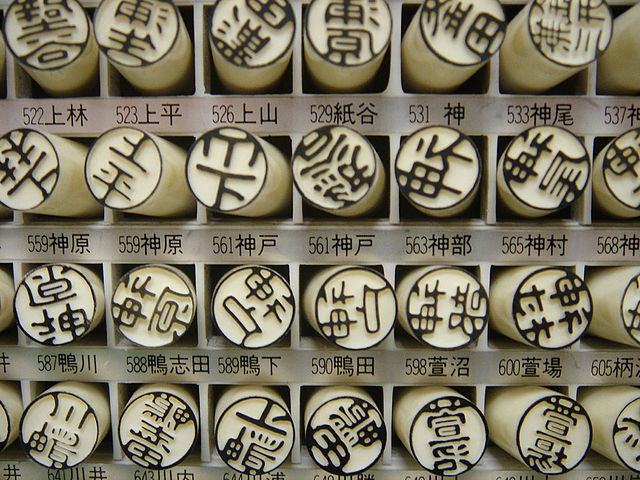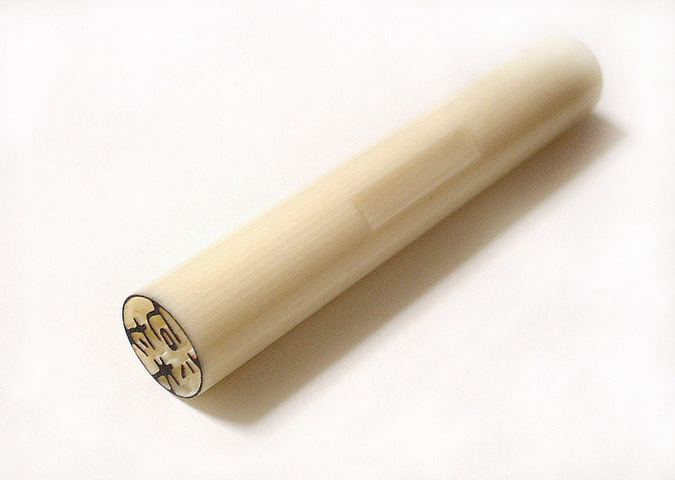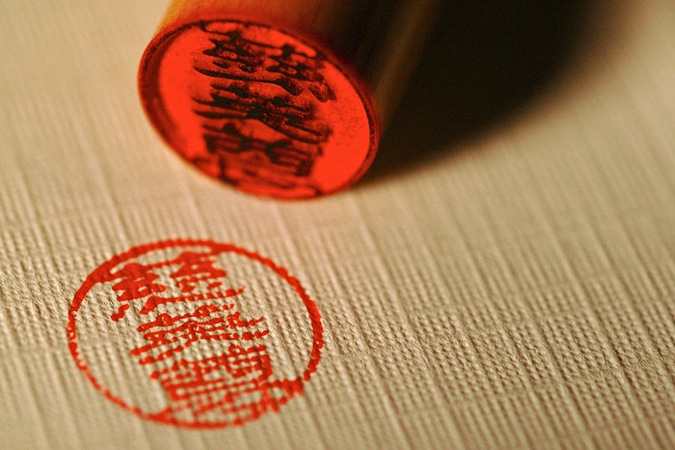
Hanko stamps are the Japanese version of a signature and have been in use for many centuries – dating as far back as the 3rd century when they were used by samurai and government officials. The choice of ivory as one of the materials used to create these everyday tools has been a significant contributor to the demand for ivory.
These stamps are used for a variety of purposes, from opening bank accounts and purchasing vehicles, to accepting deliveries and ‘signing’ on important documents. It is said that the average person owns up to five personal hanko stamps during their lifetime.
Cheap, run-of-the-mill stamps can be bought ready-made in shops, and are usually made out of plastic or wood, used for casual purchases and informal documents. The other, more expensive, option is a customised stamp – used to sign important documentation – and those are usually made out of horn, crystal or ivory.
Elephant ivory hanko stamps gained popularity from the mid-1900s, and in 1983 more than one million pounds of ivory (approximately 5000 elephants-worth), for the purpose of being made into hanko stamps, was imported from Kenya – which was legal at the time.
Since then, Japan has become a member of CITES (the Convention of International Trade for Endangered Species), and in 2016 agreed, along with 179 other parties, to call for the closure of legal domestic ivory markets that are linked to illegal trade or poaching.

One of Japan’s largest retail companies, Aeon, recently announced that by March 2020, the sale of ivory-made products will cease in all of their stores nationwide.
Aeon released an official announcement stating that since June 2015, their directly operated stores have refrained from selling elephant ivory products, and now they are looking to their 180 hanko stamp tenants – that use ivory as one of the materials – to comply with their policy and start looking at “replacing the ivory products with products made of environmentally friendly alternative materials in stages by the end of March 2020”.
However, even though retailers such as Aeon, as well as e-commerce retailer Rakuten, are changing their policies and taking a stand to close down their ivory trade, there are still others out there who are still trading in ivory, such as Yahoo! Japan, who continue to sell ivory products (such as hanko stamps) through their online auction and shopping site.
Many wildlife organisations, such as EIA, have made it clear that the Japanese government needs to close its domestic ivory market for good following its agreement with CITES in order to protect elephants and clamp down on the illegal trade of ivory.

To comment on this story: Login (or sign up) to our app here - it's a troll-free safe place 🙂.![]()








